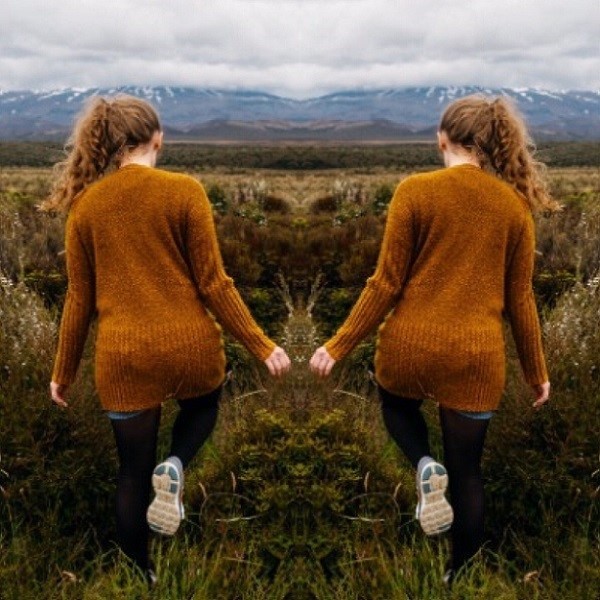
Chronic pain—so many of us live with it.
For me, it started in my early 20s when my lower back began to ache regularly. In my early 30s, it become chronic, and by the age of 40, my hands would be massaging my lower back nonstop, trying to find relief from the constant and exhausting pain.
My pain was often debilitating, making me seek refuge in my bed instead of going out and being active with friends. I was not living life to the fullest.
Then, a few miracles happened and I started to heal (tales for a different blog), but one thing that has helped me stay pain free is developing a mindfulness practice.
I learned that the cause of my pain was that my pelvis was out of alignment—one side up and forward, the other side down and back. We use one side of our bodies so much more than the other side, that over time, we can’t help but become crooked and out of balance.
The side we use more is usually called our dominant side, but I like to call it my favourite side. As a body worker, I see proof of it in almost every client.
After the initial healing and rebalancing of my pelvic bowl, it was essential for me to not lapse back into my old posture—leaning into my favourite side—which is easier said than done. My muscles had been holding that unbalanced posture for so many years, that it would’ve been easy to settle back into old habits. I needed to learn how to pay attention and be mindful of my posture.
As a friend and body worker explained, I had to help my body stay balanced by retraining the brain cells that fire messages to the nerves that move the body’s muscles. I had to “unlearn” the well-trodden nerve pathways of my favourite side, and create new ones that would fire messages to different muscles and make my body move and hold itself in a different way.
Basically, I had to start using my less favourite side more.
There are hundreds of daily activities and movements that we always perform in the same way. When we walk up or down our front steps, we use the same foot first each time. We hold our cups, brush our teeth, comb our hair, and towel ourselves dry in exactly the same way, every single time. The list goes on and on: the way we open a door, switch on a light, sit down in a chair, and get into our beds, cars, or clothes.
We don’t even need to pay attention to perform these acts flawlessly. We do them on autopilot—which is just another word for mindlessly.
Enter mindfulness.
By bringing mindfulness to these actions, we can start a process of increasing our body awareness and creating more balance in our bodies. Here are some tips my friend taught me:
(Spoiler alert: they aren’t easy, but they’re a lot of fun.)
>> First, we choose one autopilot activity that we want to focus on. Only one—let’s not get too ambitious. We have a gazillion habits, but we cannot go from zero mindfulness to 100 percent without getting overwhelmed and most likely dropping out. So start simple. I started by focusing on going up and down the few steps that I have in front of my house, my business, and my bathroom.
>> Next, we can start observing ourselves each time we perform this habit, becoming aware of how we do what we do. I noticed that I was always using the same foot first, which made that one leg much stronger than the other.
>> Then we need to consciously stop ourselves from performing the habit on autopilot. Each time we use our favourite side, we need to go back and start over again using our non-dominant side instead. It will be hard and feel weird because we are using muscles and joints in ways they are not used to being used, and we are bush-whacking new nerve pathways in our brains as well.
But this is also the fun part: When you first start using your less favourite side, you will feel like a small child again, a toddler learning to use the stairs, put on your own clothes, or cut your own cake with a knife for the first time. (Try making stir-fry with your other hand. Make sure to wear an apron and plan extra time to clean the kitchen.)
I often caught myself using my favourite foot first when I was already halfway up the steps. I’d force myself to step down backwards to start again with my other foot. At first, I felt ridiculous and self-conscious, but it made me smile too. I eventually started to have fun with this practice!
>> The final step is consolidating our new habit. As Dr. Joe Dispenza often says: “Brain cells that fire together, wire together.” By doing things often enough in a different way, we create new nerve pathways and unlearn the old ones. For me, it has become second nature: I consciously choose which foot goes first when walking up or down steps now. Well, most of the time.
After doing this mindfulness practice often enough, we may find ourselves confused about which side used to be our favourite side, which confirms that, at least for this particular activity, we have balanced our body and our brain.
One habit down, time to choose the next one. For me, that was the way I carried my shoulder bag. I, of course, had a favourite shoulder, so I would mindfully hang the bag over my other shoulder—only to find it had miraculously moved back onto my dominant shoulder within minutes, without me even noticing when I did it. This practice often made me laugh out loud at myself.
When I tried more complicated tasks, like cutting oranges and then squeezing them on a handpress, I found myself needing to go back to my dominant hand time and again, just to learn how to hold the orange and the knife without slicing my fingers. I felt as if I were the subject of an eighth grader’s science project.
I also suggest noticing how you hold your toothbrush, and how many minute and controlled movements you are able to make with your arm, wrist, hand, and fingers to get your teeth clean. It’s truly amazing—but have fun trying the other side!
Initially motivated by my pain, this body mindfulness practice has not only brought me physical well-being, it has made me more aware and present in other parts of my life as well, making it easier to be in the moment and observe my own behaviours, and ways of thinking and speaking.
If you think you are ready to bring more mindfulness, and fun, into your life, this body awareness practice might be the way to start!
~
~
Author: Leontien Reedijk
Image: Pablo Heimplatz/Unsplash
Editor: Nicole Cameron
Copy Editor: Leah Sugerman
Social Editor: Yoli Ramazzina











Read 21 comments and reply